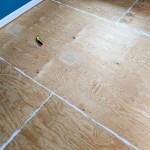How Hard Is It To Remove Linoleum Flooring?
Linoleum flooring, a classic choice for its durability and affordability, can eventually become outdated or damaged, necessitating its removal. While the task of removing linoleum may seem daunting, it's a manageable undertaking for many homeowners with the right tools and approach. The difficulty level, however, depends on various factors, including the age and condition of the flooring, the installation method, and the presence of adhesive.
Factors Influencing Linoleum Removal Difficulty
The most significant factor in determining the difficulty of linoleum removal is the type of adhesive used during installation. Older linoleum floors may have been laid with mastic, a sticky adhesive that can be challenging to remove. Newer linoleum flooring is often installed with a pressure-sensitive adhesive, which is typically easier to detach.
Additionally, the condition of the linoleum itself plays a role. Linoleum that is cracked, brittle, or loose is generally easier to remove than intact flooring. The presence of subfloor layers, like plywood or concrete, can also influence the difficulty of removal. A smooth subfloor will often make the removal process more straightforward.
Tools and Techniques
Removing linoleum involves a few basic tools and techniques. Here's a general overview:
1. Preparation:
Start by clearing the area, removing furniture and appliances. Then, assess the flooring, noting any areas that are more challenging to detach. Wear protective gear, such as a mask and gloves, to prevent dust inhalation.
2. Scoring:
Using a utility knife, score the linoleum along the seams and in a grid pattern, creating smaller sections for easier removal. This helps to loosen the flooring and reduce the force required to lift it.
3. Removal:
Depending on the adhesive used, you can employ various methods to remove the linoleum. For mastic adhesive, a scraper or pry bar can be used to loosen and lift the flooring. For pressure-sensitive adhesive, a heat gun can soften it, making it easier to peel away.
4. Adhesive Removal:
Once the linoleum is removed, you may need to remove the adhesive residue. This can be done using a chemical stripper, a scraper, or a combination of both.Tips for Successful Linoleum Removal
To make the linoleum removal process more efficient and less difficult, consider the following tips:
1. Patience is Key:
Removing linoleum can be a time-consuming process. Be patient and work in sections, taking breaks as needed.
2. Safety First:
Always wear appropriate safety gear, including gloves and eye protection, to prevent injury.
3. Consider Professional Help:
If you encounter significant challenges, such as extensive mastic adhesive, it may be beneficial to consult a professional flooring contractor.
4. Dispose of Waste Properly:
Once the linoleum is removed, dispose of it responsibly, often through local waste management facilities.Removing linoleum flooring can be a rewarding project that allows you to refresh your home's interior. By understanding the factors influencing difficulty and employing appropriate techniques, you can successfully tackle this DIY undertaking. Remember that safety is paramount, and if you encounter challenges, don't hesitate to seek professional help.

What You Should Know About Removing Old Linoleum Or Vinyl Flooring Hq Longwood Fl

How To Remove Vinyl Or Linoleum Flooring Jonny Diy

How To Remove Old Vinyl Or Linoleum Flooring Kitchens And Bathrooms

How To Remove Linoleum 13 Steps With S Wikihow

How To Easily Remove Linoleum Houseful Of Handmade

How To Remove Vinyl Flooring Prep For An Lvp Installation

How To Remove Linoleum 13 Steps With S Wikihow

Removal How To Remove Old Vinyl Tiles Home Improvement Stack Exchange

How To Remove Vinyl Flooring The Home

Mobile Homes Removing Vinyl Flooring Floor Prep For
See Also







